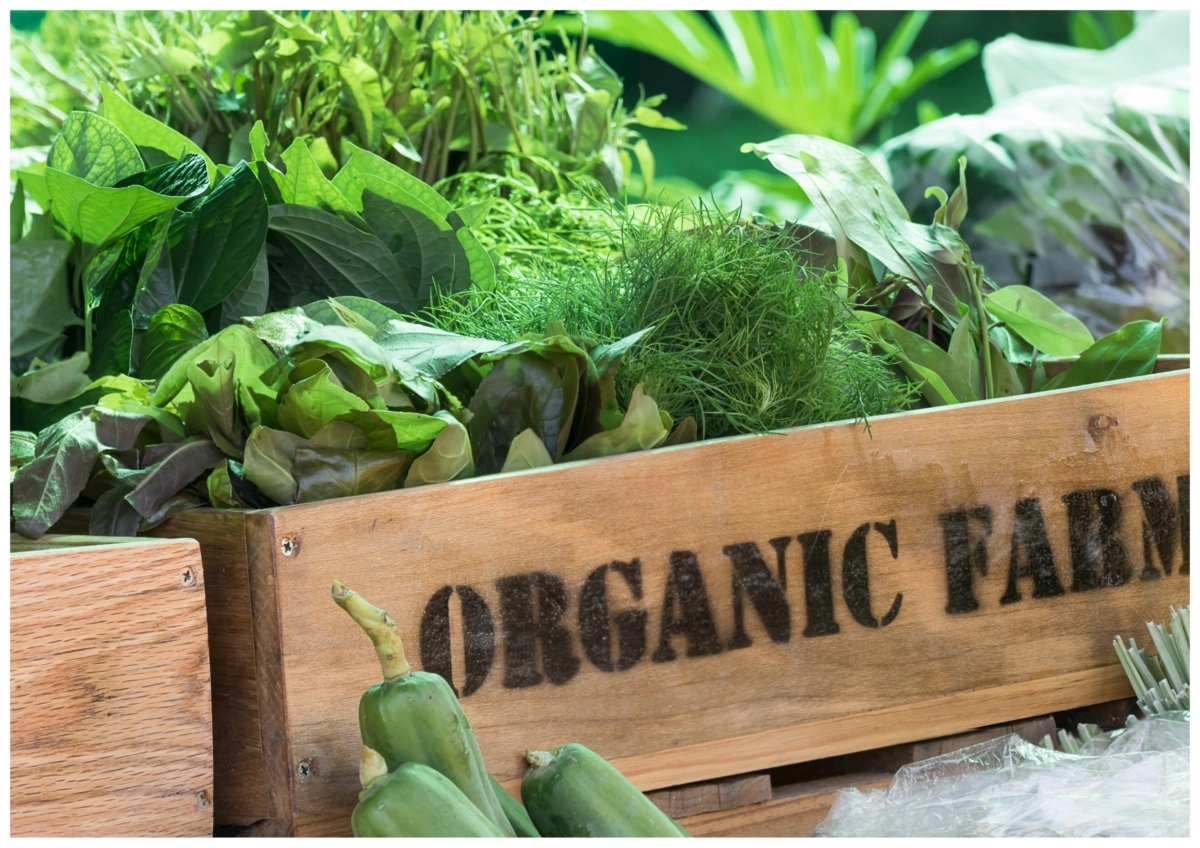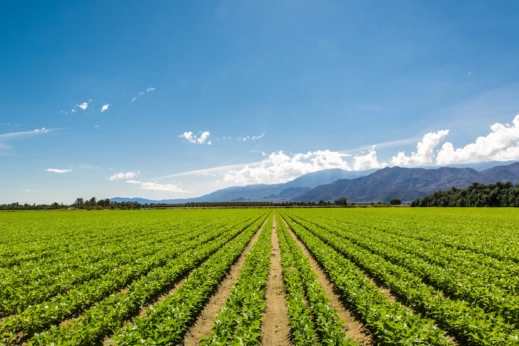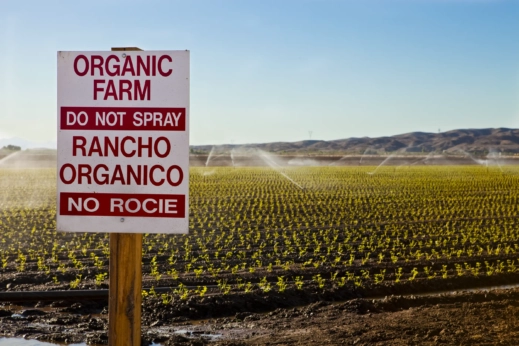A USDA NRCS specialist answers questions about transitioning to organic farming.

Even though organic farming makes up less than one percent of US farmland, it’s still a multi-billion-dollar industry.
Becoming certified organic, however, is not an overnight process for farmers. Adopting approved organic practices is only part of it. For a food to become certified organic, the farmland must be proven to have not received any pesticides or unapproved substances for at least three years.
For farmers who use more conventional methods but are interested in transitioning to organic, the process can take years. The investment of time is not without risk. During this transition period, yields can drop and farmers can still be years away from a return. Despite these obstacles, there are several reasons that farmers still pursue organic certification, such as environmental and health benefits.
We talked with Lindsay Haines, National Pest Management and Organic Systems specialist for the USDA Natural Resources Conservation Service, about what this transition looks like and what kind of government-backed support aspiring organic farmers can lean on.
This interview has been edited for length and clarity.
Modern Farmer: Can you tell me what the process of transitioning to organic farming looks like for producers in terms of requirements?
Lindsay Haines: The basic requirement is to not have any what they consider prohibited substances applied to your ground for at least three years. So, that could mean you transition ground that hasn’t had anything on it for other reasons—it was just not used or in a conservation program or something. There weren’t any inputs, it wasn’t producing anything, so it can transition right away.
Or in the more common circumstances, if people are farming conventionally and using some of the prohibited substances, they have to then stop using those substances and start doing other things—whether they plant a conservation cover for three years or actually start producing crops without those prohibited substances, but you have to document that you have done that for at least three years. So, it could be right away if you didn’t have a history, and you can prove it, or more typically three years, because you need that period of time to remove those prohibited substances.
Much of our conventional agriculture uses synthetic inputs. And they can have some very short-term impacts and long-term impacts. [In organic farming], we want to switch from that chemically based system to a biologically based system. And so, it does take a little time for the system to reset, so to speak.

Certified organic farms can’t use pesticides or other prohibited substances. (Photo from Shutterstock)
MF: During this transition period, what are some of the obstacles or hardships that producers can come up against?
LH: A very common problem with organic folks is weed management. The chemical products that many farmers use are very effective in terms of terminating weeds or plants that they don’t want in their system. If you’re doing things organically, there’s no similar, easy way to do it. It’s usually a combination of practices farmers have to use. They have to use lots of cover crops, and they have to have a more intense crop rotation and they may use some tillage.
There [are] some infrastructure issues. You need some infrastructure first, before folks can know, ‘if I grow this, where am I going to sell it?’ So, some of the other initiatives across USDA are dealing with that. Bottlenecks with [organic] meat processors is a huge issue. There’s not enough certified meat processors, and then a lot of granaries that don’t have these segregated facilities. But it is getting better.
MF: Organic certified foods may fetch premium prices. But as producers transition to organic farming, can there be a loss in yield or a financial burden that comes along with making this transition?
LH: There definitely is. We actually are offering what we consider “foregone income” for certain crops and certain regions of the country [to] compensate farmers that will see that sort of dip in yields as they transition. But once they get through the transition, I often hear farmers say it actually takes more like five years [to] get back to the yields that they might have had before. But they definitely do get back.
Even though they may be getting premium prices, they still have different costs. I hate it when people just focus on the premium prices, because there’s so much behind that in terms of investing in the production and the values and the environmental benefits. So, it’s a big picture. It’s not just about the premium prices.
MF: The USDA offers some support to farmers going through this transition, through programs such as the Organic Transition Initiative. How does the initiative aim to help address some of these obstacles?
LH: A few years ago, the secretary said he wanted all the departments to investigate ways to help people transition. And so, we got a bunch of folks together in NRCS and thought how can we help folks, and we wanted to pursue this foregone income piece. And so, we did the deep economic dive and came up with some ideas for that.
But we also wanted to help folks overcome the learning curve. Anyone in any business that wants to change how they do things has to learn a new way of doing things. And so, we want to really invest in farmers who want to invest their time to [research and try] these new ways of doing things organically. The thought behind it is to invest in folks, spending more time learning about these new ways of managing, attending workshops, getting mentors, working with other crop advisors or organic experts to find how they need to make every management decision differently throughout their growing season.

Certified organic farms must prove that the land has not received prohibited substances for at least three years. (Photo by Shutterstock)
MF: Part of the initiative is to bolster organic markets. Is there anything that farmers or non-farmers can do to also help support the growth of the organic market?
LH: I think the more people can ask questions [and] be informed, because labeling is just incredibly confusing to people. While the organic standard is not perfect—there’s fraud everywhere, right?—it does set the standard. So, you can go to a place and look at what the standards are, you can talk to your farmers. I just think it’s a great opportunity for people to come together, both farmers and consumers, to learn about our food and our environment.
MF: Is there anything else you would like farmers or non-farmers to know either about this transition in general or about the Organic Transition Initiative?
LH: I just encourage people, if you’re not familiar with NRCS, [to] come to your local field office, get to know the folks, have folks out to your farm, learn from each other. Get to know your farmers, get to know how your food is produced. Most farmers welcome those sorts of interactions. And I think we’re all better for it, when we learn more about how our food is produced, and our allies with the agriculture industry, wherever people are on the spectrum. It’s very important for our food and also our environment.
***
For farmers: You can learn more about the Organic Transition Initiative here and apply by March 1 through your local USDA Service Center to receive help making this transition.
For interested readers: To get a deeper understanding of the organic label, read our coverage here.